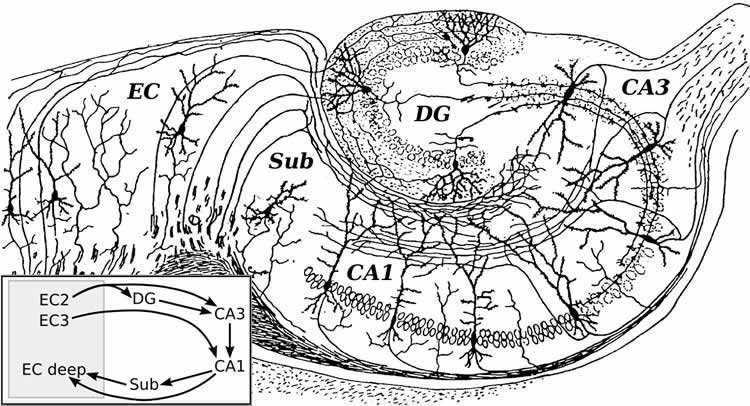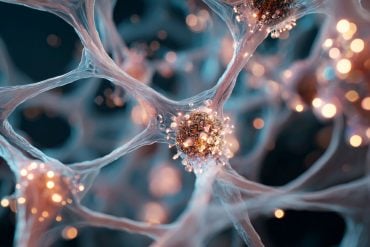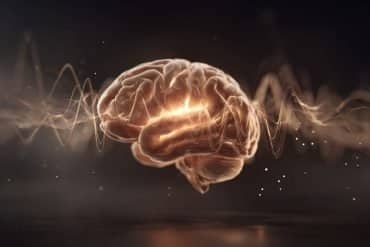Summary: A new neuroimaging study helped researchers capture the processes by which the brain stores information related to when events happen. The findings could help further the understanding of age related dementia.
Source: UC Irvine.
With a little help from HBO’s “Curb Your Enthusiasm,” University of California, Irvine neurobiologists have uncovered a key component of how the human brain marks time.
Using high-powered functional MRI on college students watching the popular TV show, they were able to capture the processes by which the brain stores information related to when events happen, or what is known as temporal memory. The study appears in Nature Neuroscience.
The researchers identified a new network of brain regions involved in these processes, confirming in humans the results of mouse studies reported last summer by Nobel laureate Edvard Moser and colleagues, who pinpointed the nerve cells in the same areas that give each moment a distinctive signature. A News & Views article in Nature Neuroscience highlights how these findings fit together.
Michael Yassa, director of UCI’s Center for the Neurobiology of Learning & Memory and senior author on the study, said the research may further understanding of dementia, as these temporal memory regions are the first to experience age-related deficits and also show some of the first pathological hallmarks of Alzheimer’s disease, most notably tangles.
“Whether these alterations have consequences for time-related memory remains to be seen; it’s something that we are currently testing,” he added.
Real-time brain imaging
In the UCI study, participants sat with their heads inside a high-resolution fMRI scanner while watching the TV show and then viewing still frames from the episode, one at a time.
The researchers found that when subjects had more precise answers to questions about what time certain events occurred, they activated a brain network involving the lateral entorhinal cortex and the perirhinal cortex. The team had previously shown that these regions, which surround the hippocampus, are associated with memories of objects or items but not their spatial location. Until now, little had been known about how this network might process and store information about time.
“The field of neuroscience has focused extensively on understanding how we encode and store information about space, but time has always been a mystery,” said Yassa, a professor of neurobiology & behavior. “This study and the Moser team’s study represent the first cross-species evidence for a potential role of the lateral entorhinal cortex in storing and retrieving information about when experiences happen.”
“Space and time have always been intricately linked, and the common wisdom in our field was that the mechanisms involved in one probably supported the other as well,” added Maria Montchal, a graduate student in Yassa’s lab who led the research. “But our results suggest otherwise.”
Testing time-related memory
Yassa said it’s worth noting that his group published another report last year in Neuron showing that the lateral entorhinal cortex is dysfunctional in older adults with lower-than-average memory performance. That study did not test memory for time but rather discrimination memory for similar objects.

Most studies examining time in the laboratory employ static objects on a computer screen, Yassa said, but they tell very little about how the brain processes information in the real world. This is why the UCI study used “Curb Your Enthusiasm,” a situational comedy that mirrors real life, as it involves people, scenes, dialogue, humor and narrative.
“We chose this show in particular because we thought it contained events that were relatable, engaging and interesting,” he said. “We also wanted one without a laugh track. Interestingly, while the show is hilarious for some of us, it did not seem to instigate a lot of laughter among the college undergraduates we tested – which was excellent for us, as we needed to keep their heads inside the scanner.”
Funding: The study was funded by the NIH/National Institute of Mental Health, NIH/National Institute on Aging.
Source: UC Irvine
Publisher: Organized by NeuroscienceNews.com.
Image Source: NeuroscienceNews.com image is in the public domain.
Original Research: Abstract for “Time is just a memory” by Matthew L. Shapiro in Nature Neuroscience. Published January 14 2019.
doi:10.1038/s41593-018-0331-x
[cbtabs][cbtab title=”MLA”]UC Irvine”New Way By Which the Brain Marks Time Identified.” NeuroscienceNews. NeuroscienceNews, 15 January 2019.
<https://neurosciencenews.com/brain-time-10555/>.[/cbtab][cbtab title=”APA”]UC Irvine(2019, January 15). New Way By Which the Brain Marks Time Identified. NeuroscienceNews. Retrieved January 15, 2019 from https://neurosciencenews.com/brain-time-10555/[/cbtab][cbtab title=”Chicago”]UC Irvine”New Way By Which the Brain Marks Time Identified.” https://neurosciencenews.com/brain-time-10555/ (accessed January 15, 2019).[/cbtab][/cbtabs]
Abstract
Time is just a memory
Experience unfolds continuously in time, but we remember discrete sequences of events. In this issue of Nature Neuroscience, Montchal et al. describe brain activity patterns that predict how well people remember precisely when recent events occurred. Converging evidence suggests that homologous neural machinery structures temporal representations in rats and people.






